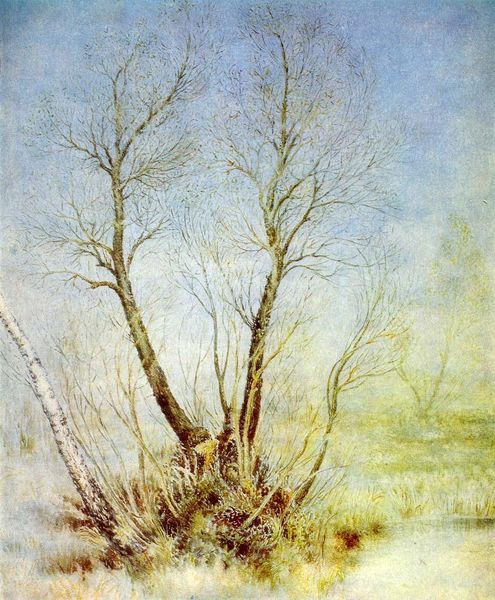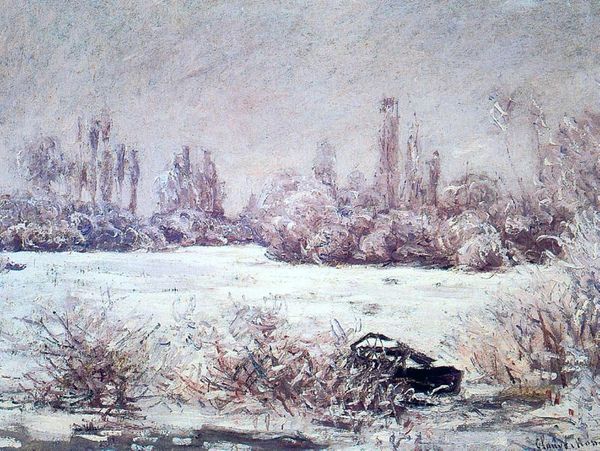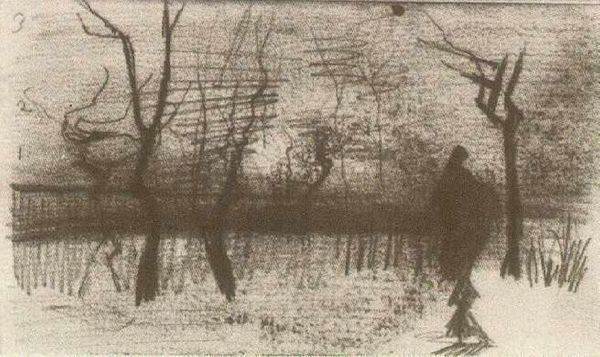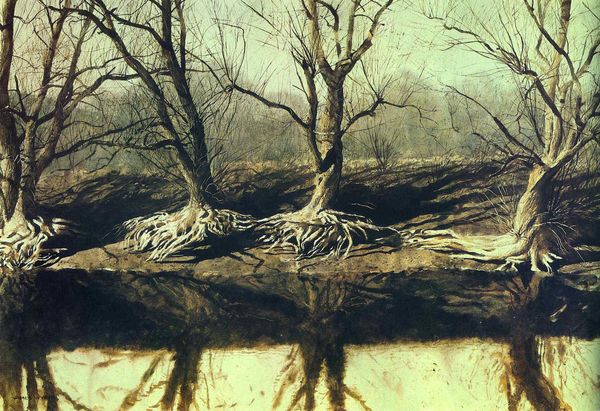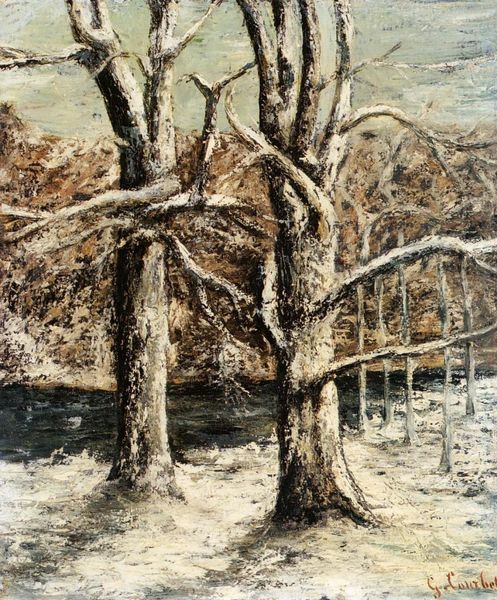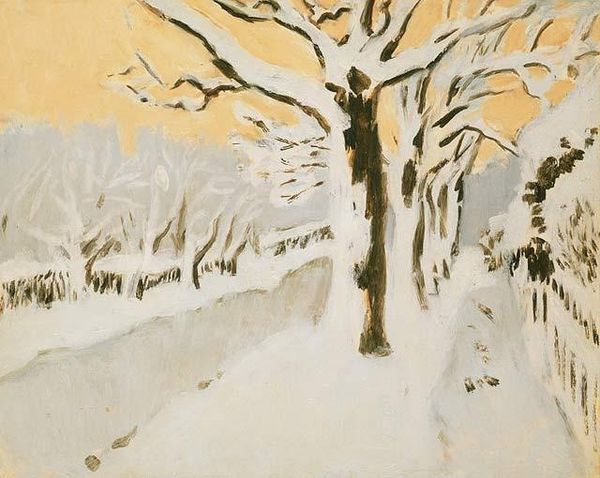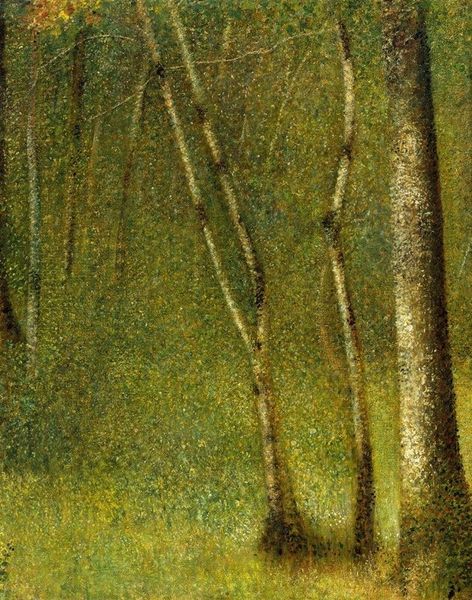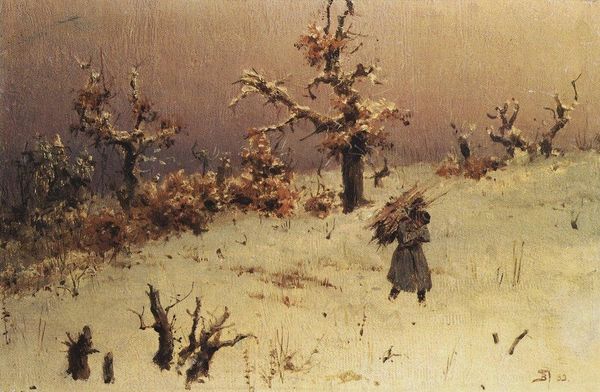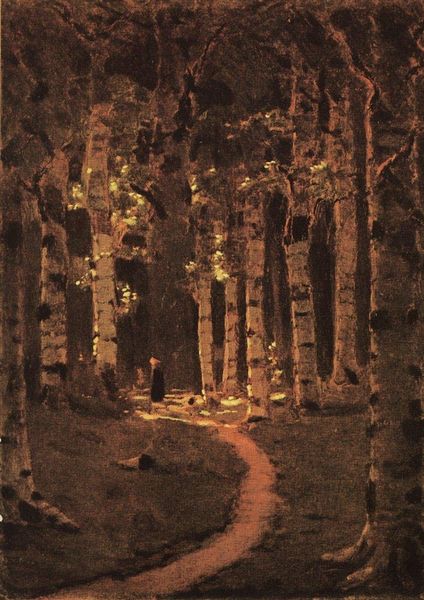
Copyright: Public domain
Editor: Here we have Arkhyp Kuindzhi’s “Winter. Thaw,” painted in 1895. The muted tones and hazy atmosphere give it such a melancholic feel, almost like a memory fading away. How do you interpret this work? Curator: Well, looking at this landscape through a historical lens, it reflects the broader social and political climate of late 19th-century Russia. The subdued palette and somewhat desolate scene, in their own way, speak to a period of social unease and transformation, just before major upheavals. The symbolism of a thaw is powerful, right? Editor: Yes, definitely, like the old is melting away, but what comes next is still uncertain. The ground is bare right around the base of the tree, and the artist focused a lot on the snow and its different hues. It almost feels biographical somehow. Curator: That's insightful! The play of light and shadow isn't just aesthetic. How would this "thaw" have been perceived? Perhaps as a symbol of emerging revolutionary ideas? Editor: Oh, I never thought of that! So, the art isn’t just about what you see but about reflecting what people were feeling. It also has visual echoes of Impressionism; that feels like it might fit in with artistic trends in Russia at the time? Curator: Precisely! But it’s equally crucial to understand Kuindzhi’s position within the Russian art world. The social role of landscape painting at that time was pretty strong, emphasizing the homeland and rural existence and values... Is there a rejection of those here? Is it a subtle subversion? Editor: I guess that questioning, that uncertainty is why it is so compelling to consider. Thanks so much, I will be pondering the revolutionary thaw all afternoon. Curator: Likewise, a different view has enhanced my take on what it reveals about its social moment. It goes beyond just aesthetic enjoyment to become an insight into the zeitgeist.
Comments
No comments
Be the first to comment and join the conversation on the ultimate creative platform.


